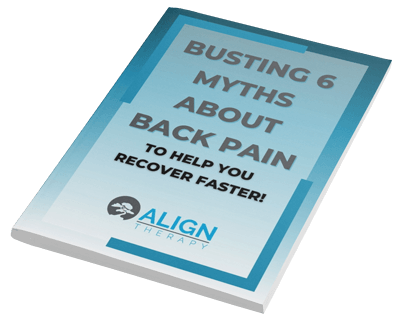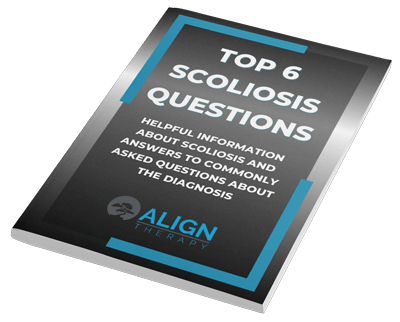If you’re reading this, chances are you’re already exploring scoliosis treatment options—for yourself, your child, or someone you care about. And if you’re like many families we meet in Lehi or St. George, Utah, it’s easy to feel overwhelmed by the flood of information online.
Some advice is helpful… some, not so much.
After over 12 years of working with scoliosis patients and being a proud member of the International Society on Scoliosis Orthopaedic and Rehabilitation Treatment (SOSORT), I’ve seen what truly works—and, unfortunately, what really doesn’t.
Here are 5 scoliosis treatment red flags to avoid, plus a bonus tip that may surprise you.
Let’s dive in.
1. Using a Brace When It’s Not Necessary
Scoliosis bracing has its place—but only in the right circumstances. It’s not a one-size-fits-all solution.
Bracing is typically recommended for:
- Kids with curves between 25–45 degrees and remaining growth
- Younger children (20–45 degrees) with family history or high risk of progression.
- Early night-time bracing can be helpful for those diagnosed young with a high risk of progression, even if they are not at 25 degrees yet.
But if your child has a 10-degree curve and someone’s pushing a brace? That’s probably unnecessary.
I’ve also seen teens well past puberty and even adults being kept in braces with no evidence it’s helping. That’s a problem. Bracing works by guiding growth. If there’s no growth left, we’re not changing the shape of the spine—we’re just limiting movement and potentially creating psychological distress.
For most adult scoliosis patients, movement-based therapy is far more effective. In our Utah clinics, we focus on helping the body become the brace through strength and alignment.
2. “Too Good to Be True” Treatment Promises
“If it sounds too good to be true, it probably is.”
Be wary of providers claiming to “fix” or “cure” scoliosis or reduce a 40-degree curve down to 5 degrees in a few weeks.
Why? Scoliosis is a structural spinal condition– it involves changes to the shape of the vertebrae. And unless you’re going in and reshaping the bones (which no one is), that curve isn’t going away entirely.
Can we improve posture, reduce pain, and sometimes see modest reductions in curvature? Yes, but a permanent “fix” without surgery isn’t realistic.
Miracle claims are usually marketing fluff—not evidence-based scoliosis care.
3. No Research to Support Their Methods
Always ask:
“What research backs up your scoliosis treatment approach?”
If a provider can’t answer, it’s a red flag. At Align Therapy, we use the Schroth Method and SEAS (Scientific Exercise Approach to Scoliosis)—the most researched non-surgical scoliosis treatments available. We can show you study after study that backs up what we do.
Case studies are great (we share ours!), but peer-reviewed research is even better. You deserve treatment that’s grounded in science—not just someone’s opinion or a marketing pitch.
4. Outdated “Stretch This, Strengthen That” Methods
A lot of providers—even physical therapists—still treat scoliosis with the old-school approach:
“Stretch the concave side. Strengthen the convex side.”
It sounds logical, but it’s overly simplistic—and frankly, outdated. Scoliosis is a 3D condition with rotation, spinal misalignment, and muscular imbalance. And here’s what we now know from the research: both sides of the spine are often weak.
So if you’re only strengthening one side, you’re ignoring the whole picture.
Modern, curve-specific therapy like Schroth and SEAS provides a far more complete approach to spinal rehabilitation.
5. General Core Work Without Curve-Specific Focus
Core strength is great. Stretching hamstrings? Sure. But if that’s all you’re getting, it’s not enough.
Your scoliosis program should be tailored to your unique curve pattern. Cookie-cutter programs don’t work when dealing with something as complex as scoliosis.
If a provider gives everyone the same exercise program, that’s a problem.
If every patient is doing the same exercises, it’s time to ask why.
Bonus: Avoiding Surgery at All Costs
I get it. No one wants scoliosis surgery. And we do everything we can to avoid it. But I am not anti-surgery—and you shouldn’t be either.
There are times when surgery is the right choice, especially in severe cases with neurological compromise or lung compression.
A good scoliosis provider will work with surgeons as part of a multidisciplinary approach. If your provider is telling you to avoid a surgical consult at all costs—even with a 75+ degree curve—that’s a huge red flag. Sometimes, delaying surgery too long makes it no longer an option. We want to avoid unnecessary surgery, yes—but we don’t want to ignore it when it is necessary.
✅ Looking for Expert Scoliosis Treatment in Utah?
If you or your child has been diagnosed with scoliosis—or you’re noticing early signs—don’t wait. The sooner you start, the more options you’ll have for success.
At Align Therapy in Lehi and St. George, we provide personalized, conservative scoliosis treatment using the Schroth and SEAS methods. Our programs are evidence-based, 3D, and adapted to your unique needs.
Here’s what you can expect:
- A full explanation of your or your child’s curve
- A treatment plan supported by science and results
- Compassionate care without false promises
We’ll never brace when it’s not appropriate or promise results that aren’t realistic.
Come in for a free consultation and let’s talk about your options. We have locations in Lehi and St. George, Utah, and would love to help you feel more confident moving forward.
📍 Serving families across Utah County and Washington County
📞 Call us at 801-980-0860
🔗 Or schedule a Free Consultation here: https://aligntherapyutah.com/free-consultation/



